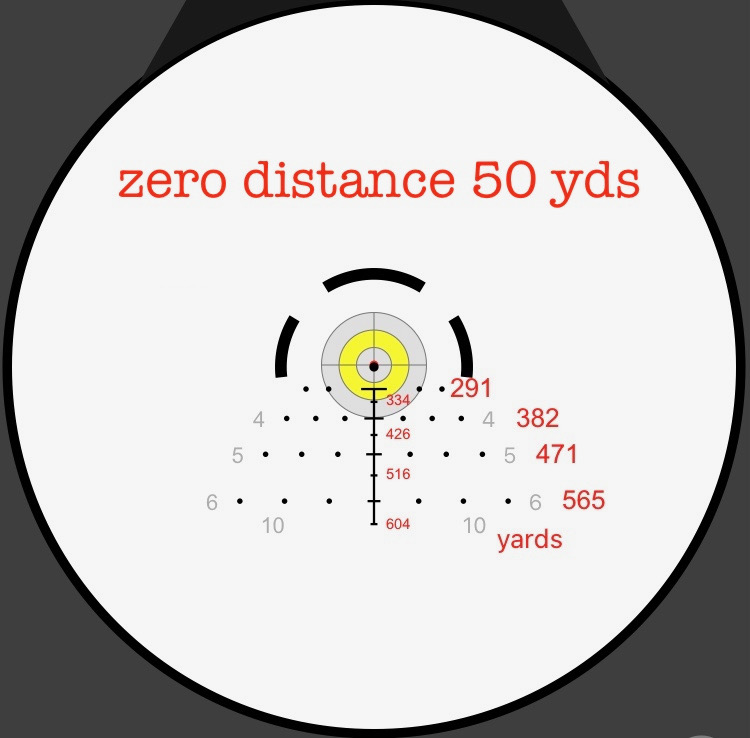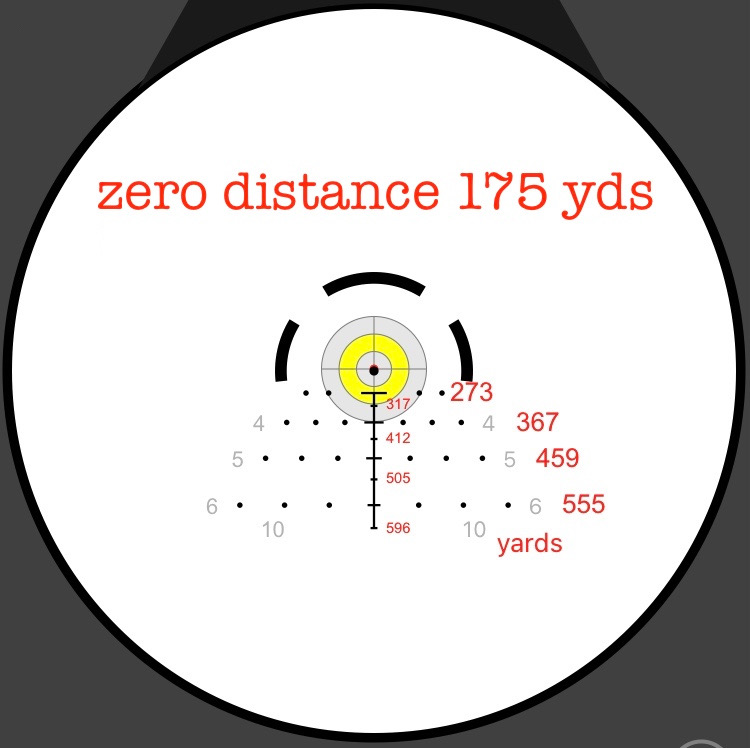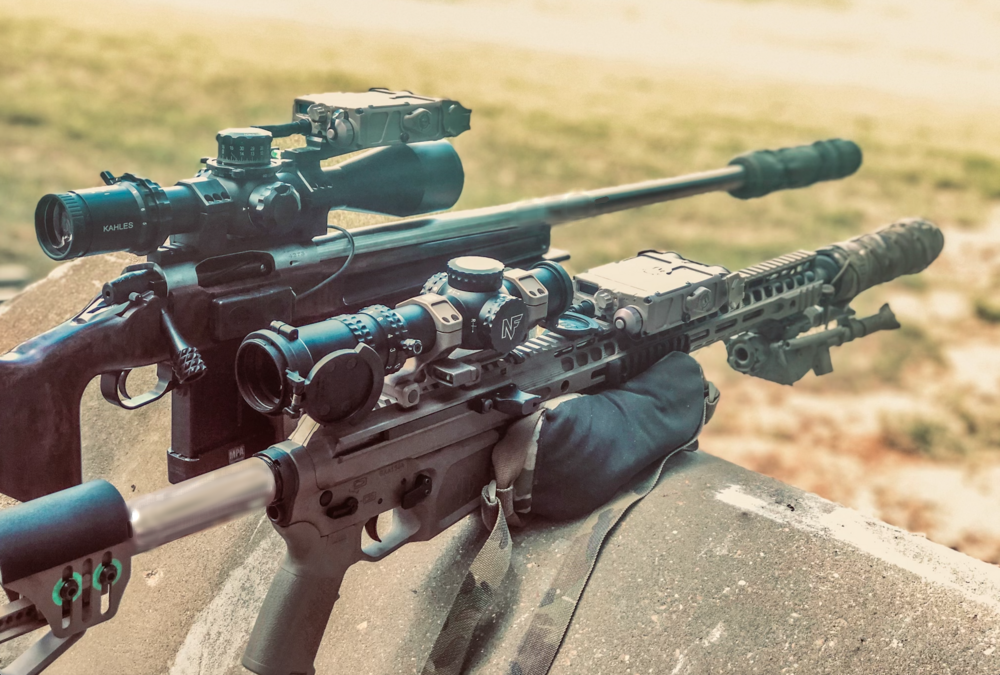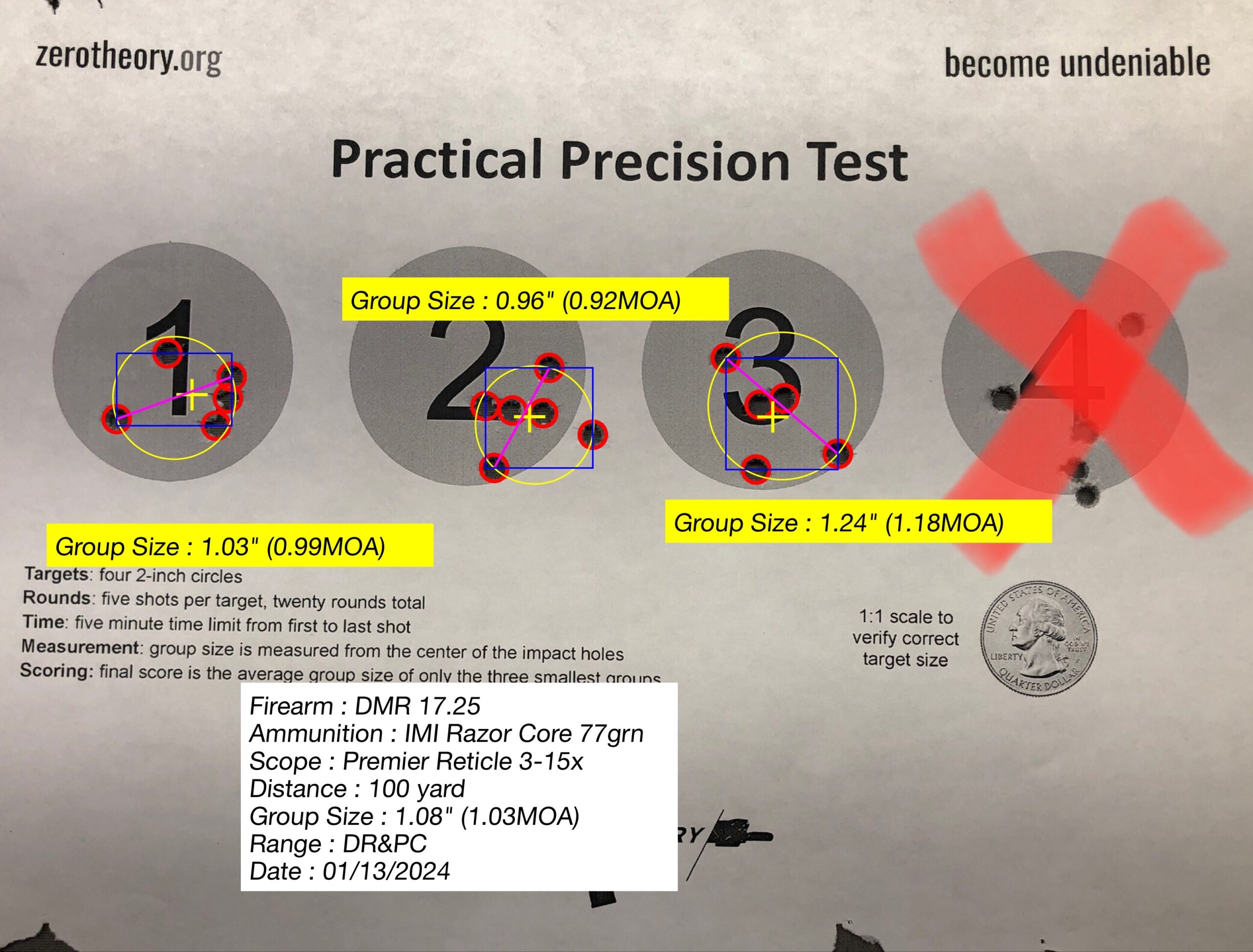Ballistic Drop Compensator Truing
by Randy Davis
Many optics on the market are equipped with Ballistic Drop Compensator (BDC) reticles. While this type of reticle can simplify shooting at distance, there are some considerations that can greatly enhance their use. For those unfamiliar with BDC reticles, it is a reticle with hold off points designed into the reticle in lieu of Mil or MOA marks. This can be an extremely effective design if set up correctly. In this article we will offer a few methods of truing your BDC in order to address the main shortfall they bring to the table.
Trajectory of any given bullet is determined by its ballistic coefficient (BC), its velocity, and the density altitude of its environment. BDC reticles are designed based on the trajectory of a particular bullet traveling at a certain speed in a specific environment, all of which was determined ahead of time by the reticle designer. The main problem with BDCs is that the trajectory of the end user’s bullet is subject to change when any one of these factors change. Of the three, BC and velocity have the greatest effect. The military was able to minimize these changes to great success with the Trijicon ACOG through the use of standardized barrel lengths and ammunition. As a result, this BDC reticle was effective for “minute of man” engagements at distance for most rifles.
There are a couple of things that must be determined before truing your data. What is the main purpose of the rifle? What are your accuracy requirements? What level of accuracy is your weapon and ammo combination able to achieve? Is the reticle calibrated in meters or yards? What are the distances in the reticle sub tensions? All of these answers will factor into determining how to set up your BDC.
There are three main ways to true a BDC reticle:
- Ballistic program truing
- Field expedient truing
- Zero manipulation
Ballistic program truing requires you to locate a schematic showing the exact Mil or MOA drop of the hold off points (AKA stadia marks) of your reticle. For example the stadia mark for 300 yards may measure a drop of 1.2 Mil. Once you have the exact Mil or MOA drops for all of the stadia marks you then can determine the distance each of those stadia marks represent for your specific rifle and ammo set up. To do this, you will need to load all your data into a ballistic program. Of the three methods, this is the most accurate, but is not very intuitive under stress. Hitting small targets at distance is where this method shines. The main problem with this method of truing is that it negates the main benefit of the BDC reticle. By changing the hold points from 100 yard increments to random yardage increments, it makes a simple reticle complex. If pinpoint precision is your main goal a Mil or MOA reticle is a much better option.
Field expedient truing involves zeroing your rifle at the prescribed distance, typically 100 yards, then re-zeroing at 300 yards using the 300 yard BDC hold. This method is obviously not particularly precise, but it will generally get you much closer to true for your 300, 400, and 500 yard shots while having a negligible shift at 100 and 200 yards. This method is beneficial because it doesn’t require any additional equipment such as a ballistic calculator and is fairly easy to accomplish. For this method to be effective, however, you must be shooting a weapon/ammo combination similar to the one for which the scope was designed. An ACOG mounted on a rifle shooting subsonic 300 AAC Blackout is not going to work well with this method.
The final method is zero manipulation. This is a hybrid of the two previous methods. Put simply, changing the zero distance of the rifle to something other than 100 yards will sometimes improve how closely your actual bullet drops match the stadia marks in your BDC. This method requires a ballistic program which will display the particular reticle you are using overlaid with the bullet drop information it calculated for your rifle. We recommend the Applied Ballistics mobile app (RIP Strelok Pro). Once you have your data inputted, change the zero distance from 100 yards to three or four other distances, for example 36, 75, and 200 yards. For each one, check the reticle overlay and note how closely your given bullet drops align with the BDC stadia marks. Choose the zero distance that causes your bullet drops to line up most closely to the corresponding stadia lines.
Let’s do a comparison with data taken from my M4. The TA31 ACOG’s reticle was designed for the M855 round traveling at 2800fps with a height over bore of 2.83 inches. With that data the 600 yard drop is 111.7 inches or 17.8 MOA. The 55g M193 round traveling at 3000fps has a 600 yard drop of 112.2 inches or 17.9 MOA. The Mk262 77 grain has a 600 yard drop of 104.3 inches or 16.6 MOA. For a combat rifle this is not a significant difference in trajectory.
We will start to see significant differences in trajectory when we begin shortening barrels and greatly reducing velocity. If we run the numbers with the 10.3” MK18 we get a muzzle velocity of 2639fps. The 600 yard drop becomes 129.9 inches or 20.7 MOA. The 55g M193 at 2755fps has a 600 yard drop of 141 inches or 22.4 MOA. The Mk262 77g has a 600 yard drop of 143.3 inches or 22.8 MOA.
The M4 data indicates a weapon which would benefit greatly from the second truing method, that is, field expedient truing. The Mk18 data indicates a weapon system which would benefit much more from the first truing method, that is, ballistic program truing. This is where the main purpose of the weapon comes into play. Not a lot of people designate a 10.3” AR for their long range setup, however, the Mk18 has proven it performs well in urban environments as a do-it-all rifle. The short barrel may not be optimized for work at distance, but it doesn’t mean it cannot do it effectively when needed. In urban environments we are mostly looking at sub-300 yard shooting. For this situation one might opt for a smaller, more maneuverable rifle. Knowing your holds out to 300 yards will easily take care of 99 percent of likely targets.
Always confirm your velocity with a chronograph. Never trust what is printed on the box. A future article will cover truing the BC of your bullet but for today the one listed on the manufacturer’s website should work. The main concern is noting the velocity at which the given BC is accurate and determining whether your rifle is achieving comparable speeds. Finally, always set up your weapon system for your operational environment. If you choose a BDC, understand the benefits of speed and ease-of-use may come with limitations in terms of precision. This can be easily overcome with training and taking the time to learn what the BDC holds mean for your set up. Know your rifle, ammo, and optic. Understand all three influence the capability of your weapon system. Like most things, consistent training with your system will yield much more capability to the shooter than simply buying the newest gear.
About the author: Randy Davis is a sniper instructor and sniper team leader on a law enforcement SWAT team. He previously served in various tactical and precision shooting roles in both the US Army and as a private contractor. Some of his hair is gray, but he’s mostly earned it.
Like this? Check out our other articles…
[013] Gas Gun vs Bolt Gun pt 2
Gas Gun vs Bolt Gun pt 2 by [...]
[012] Practical Precision Test
Practical Precision Test by Zero Theory staff [...]
[011] Ballistic Drop Compensator Truing
Ballistic Drop Compensator Truing by Randy Davis [...]






